Add InstantSearch and Autocomplete to your search experience in just 5 minutes
A good starting point for building a comprehensive search experience is a straightforward app template. When crafting your application’s ...
Senior Product Manager


A good starting point for building a comprehensive search experience is a straightforward app template. When crafting your application’s ...
Senior Product Manager

The inviting ecommerce website template that balances bright colors with plenty of white space. The stylized fonts for the headers ...
Search and Discovery writer

Imagine an online shopping experience designed to reflect your unique consumer needs and preferences — a digital world shaped completely around ...
Senior Digital Marketing Manager, SEO

Winter is here for those in the northern hemisphere, with thoughts drifting toward cozy blankets and mulled wine. But before ...
Sr. Developer Relations Engineer

What if there were a way to persuade shoppers who find your ecommerce site, ultimately making it to a product ...
Senior Digital Marketing Manager, SEO

This year a bunch of our engineers from our Sydney office attended GopherCon AU at University of Technology, Sydney, in ...
David Howden &
James Kozianski

Second only to personalization, conversational commerce has been a hot topic of conversation (pun intended) amongst retailers for the better ...
Principal, Klein4Retail

Algolia’s Recommend complements site search and discovery. As customers browse or search your site, dynamic recommendations encourage customers to ...
Frontend Engineer

Winter is coming, along with a bunch of houseguests. You want to replace your battered old sofa — after all, the ...
Search and Discovery writer

Search is a very complex problem Search is a complex problem that is hard to customize to a particular use ...
Co-founder & former CTO at Algolia

2%. That’s the average conversion rate for an online store. Unless you’re performing at Amazon’s promoted products ...
Senior Digital Marketing Manager, SEO

What’s a vector database? And how different is it than a regular-old traditional relational database? If you’re ...
Search and Discovery writer

How do you measure the success of a new feature? How do you test the impact? There are different ways ...
Senior Software Engineer

Algolia's advanced search capabilities pair seamlessly with iOS or Android Apps when using FlutterFlow. App development and search design ...
Sr. Developer Relations Engineer

In the midst of the Black Friday shopping frenzy, Algolia soared to new heights, setting new records and delivering an ...
Chief Executive Officer and Board Member at Algolia

When was your last online shopping trip, and how did it go? For consumers, it’s becoming arguably tougher to ...
Senior Digital Marketing Manager, SEO

Have you put your blood, sweat, and tears into perfecting your online store, only to see your conversion rates stuck ...
Senior Digital Marketing Manager, SEO

“Hello, how can I help you today?” This has to be the most tired, but nevertheless tried-and-true ...
Search and Discovery writer
Each year, the streaming-video landscape becomes more competitive. Major media players, like Amazon, Disney, and Netflix dedicate huge resources and funds to their constant development and improvement, iterating their algorithms to best please their audiences while protecting their subscriptions and market share. Traditional media companies and new entrants must ensure they have the best tools to compete against these behemoths.
A major part in a media company’s success is the customer experience and user journey across a website or mobile app. Most media companies have a broad library of content to promote, but surfacing that content at the right time, to the right viewer is more complicated.
The ultimate goal is to give users the ability to find desired content with minimal effort. When the content consistently appeals to users, they will be more adventurous and want to experiment with new types of content.
The media landscape is crowded with more than 300 consumer streaming services, offering many thousands of videos in their catalogs—giving consumers both choice and power. In order to be selected, a media company must invest in fast and highly relevant content discoverability.
Great relevance is achieved by blending editorial and business rules with user intent. User behavior is important, but it is not the only factor impacting and shaping the experience. Content curation and marketing strategy matter as well.
The next challenge for media companies is audience engagement—to keep users engaged and loyal—and not bounce or churn to one of the myriad of competitor services available. Choosing the correct tools and developing a robust strategy to achieve these goals is vital for a media company’s survival, considering the high upfront costs associated with producing or acquiring media content.
Oftentimes, the most critical question is not only what content is being offered, but also how it is surfaced to the user.
For optimal user engagement, only the most relevant content should be surfaced, the search and navigation should be uniform on multiple platforms, and search results should be presented to users at a lightning fast speed.
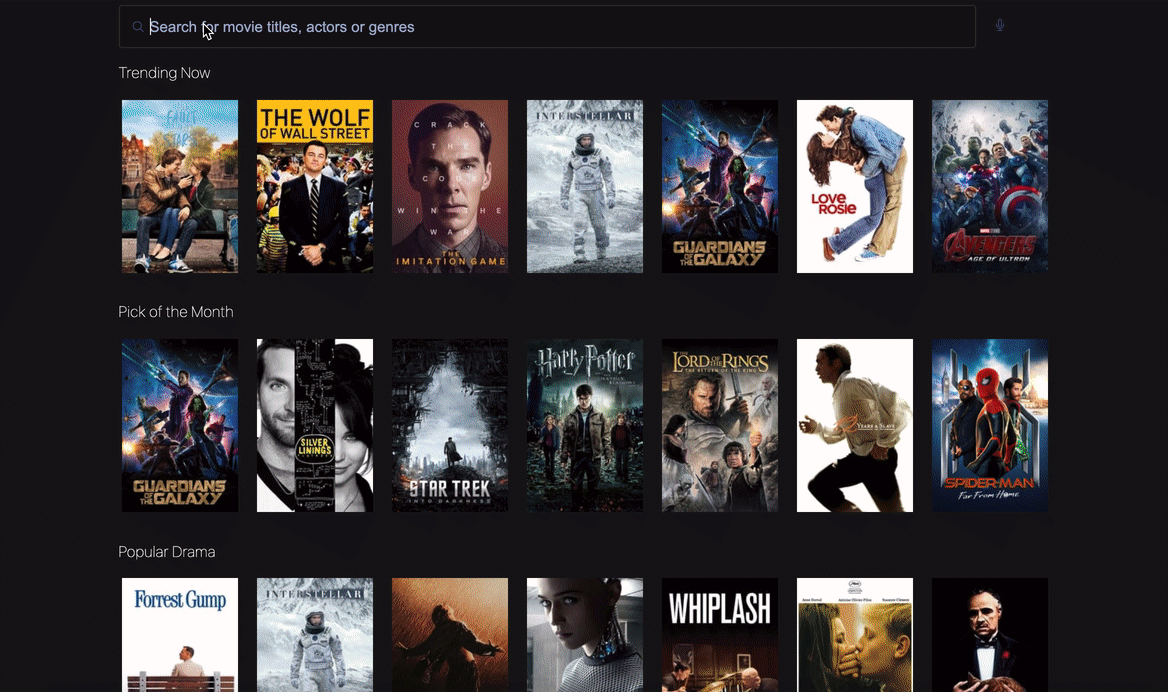
Seamless cross-device UX should allow users to find content easily in any situation, from multi-index search on a laptop, to voice search on mobile devices, to the limited search functionally on a device like a TV remote. The experience should be similar on each of these devices to ensure easy, consistent, and familiar navigation as well as the ability for the viewer to quickly find what they need.
Only the most relevant content should be presented to the user. This element includes natural language understanding, personalized results, and good ranking of the content. The search needs to adapt to the user and not the other way around.
Lightning fast results not only affect the customer experience, but have a direct impact on the company’s bottom line.
Learn more about conquering the media industry
In the examples below, we showcase how a superior search experience looks like for various successful media companies and what components are needed in order to build it.
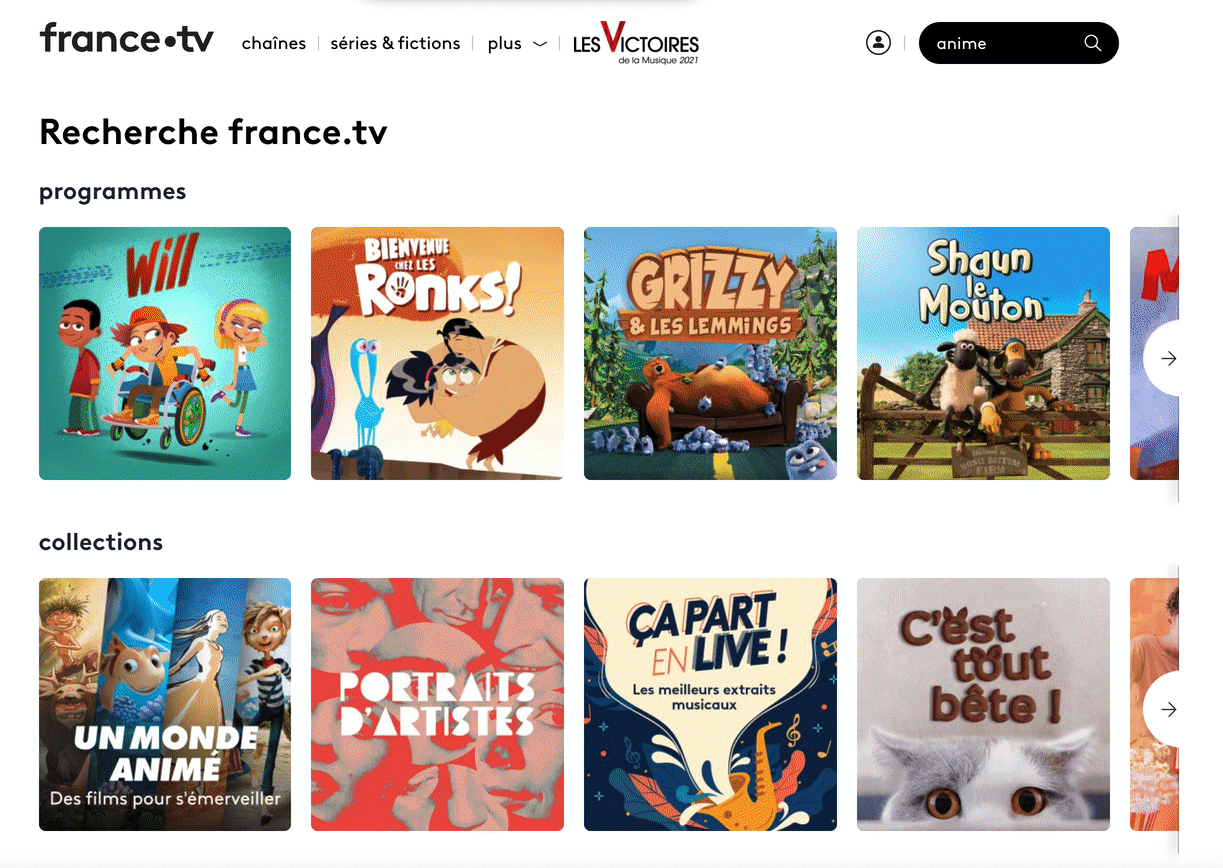
For video-streaming service leaders such as Netflix, 20% of discovery streaming happens through search. Search can answer both very specific and very broad questions, guiding the users towards the most relevant to their content interests. For instance, every time you log in to Netflix, whatever the device, the service analyzes the viewers selections to know at all times what they saw, what banner they clicked on, and what genre of movie they usually watch most often. With these details and many others, the algorithm generates a perfectly trained profile that will be in charge of defining the recommendations that appear on the screen.
Visitors to France TV’s website can enter a single query in the search bar to bring up relevant entertainment offerings. Then, on the search results page, they’re shown a variety of suggested programs, collections, and videos.
https://www.algolia.com/doc/ui-libraries/autocomplete/guides/including-multiple-result-types/
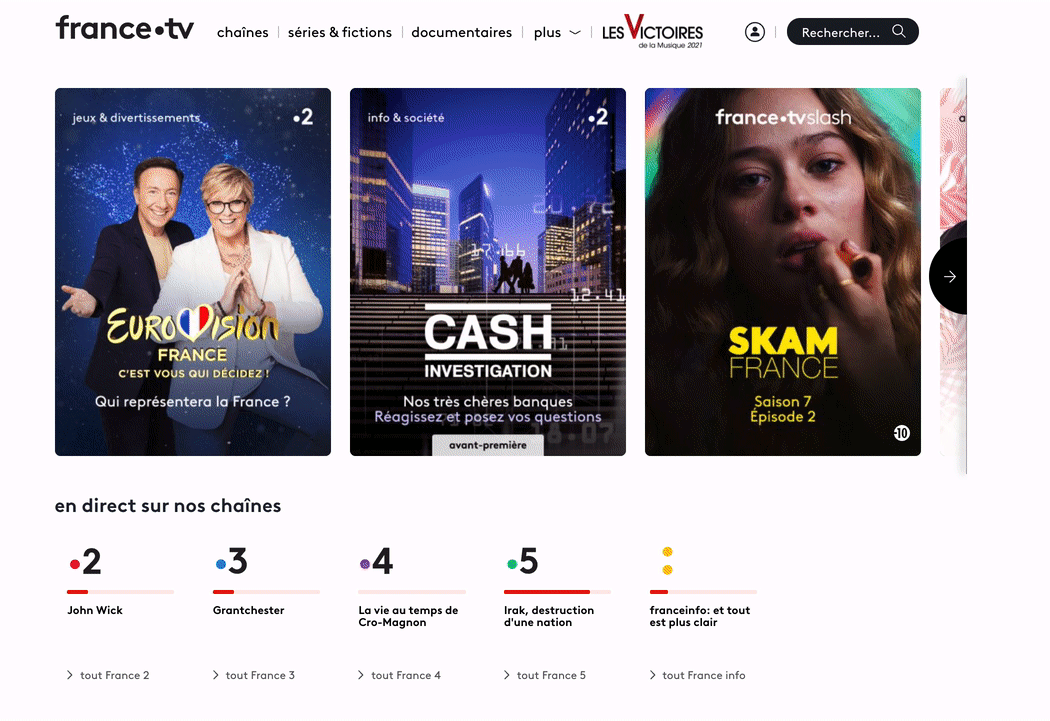
Many media streaming service users, when searching for content, use very limited devices such as TV remotes or mobile phone screens. Because of this, they are more likely to enter shorter queries with a limited amount of keywords, and frequently give up their search efforts very quickly since the search fails or is too difficult. To address this common problem, multi-index suggestions on empty queries are the perfect solutions—essentially, the service generates suggestions that are likely to appeal to the viewer. Before the users starts typing, they are already able to see various suggestions on different topics likely to match their interests, eliminating the need for extensive typing and searching on uncomfortable devices.
In this example, along with a search box waiting for visitors’ queries about entertainment, the France TV site offers complementary types of content, including top searches, promoted items, what’s showing on different channels, and popular programs.
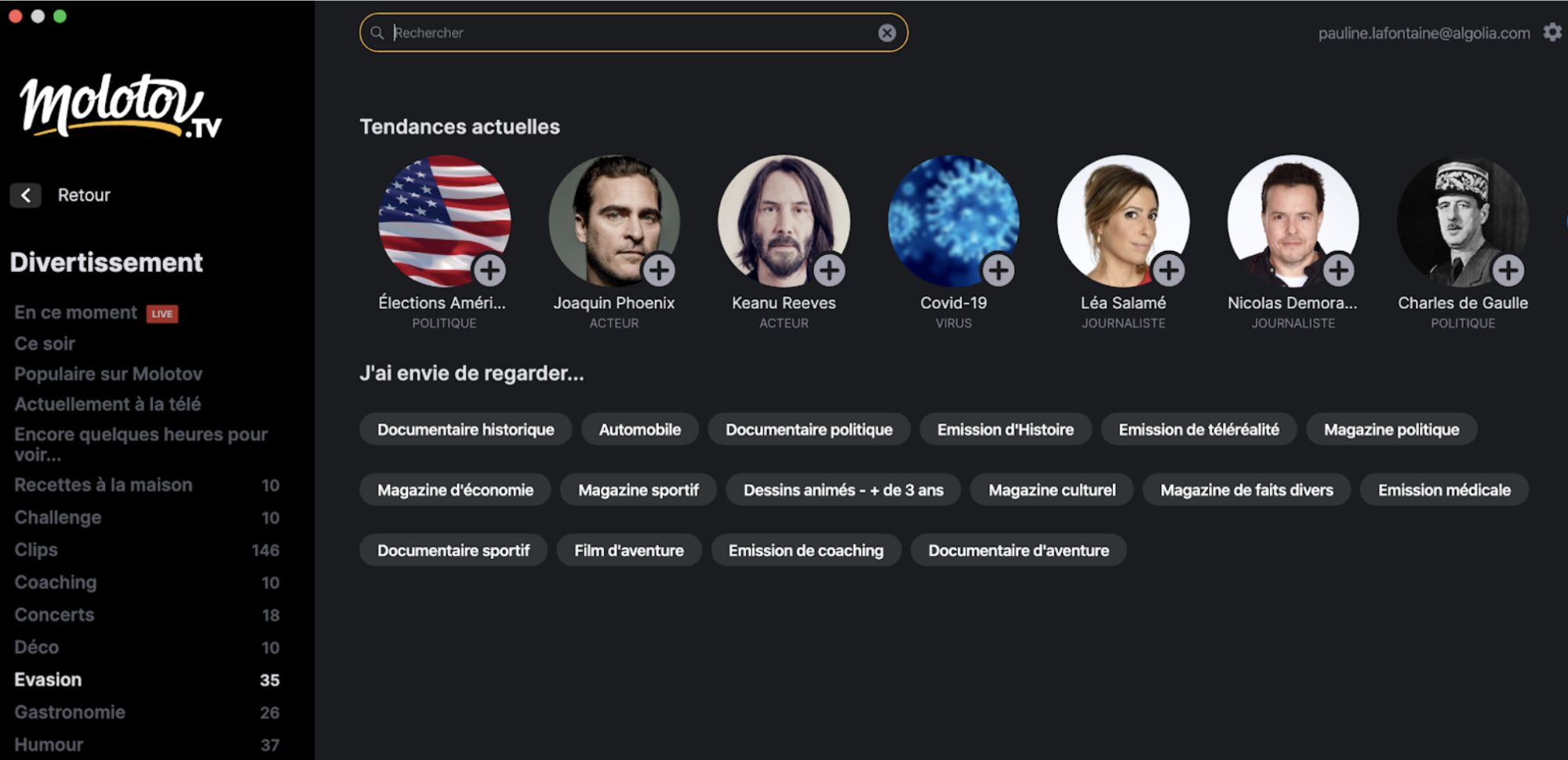
French TV and video streaming website Molotov.TV starts its users off with an array of facets to help them narrow down their searches. When they choose a particular facet, their recommended search filters are updated accordingly.
The same critical elements are used for media industries: hero image, landing page, banners, and boosted content. Recommended content is another important part of building a rich and enjoyable user experience on a media site, such as personalization (based on users previous behavior and preferences), related entities (content related to chosen actors/directors), and similar content (similar titles and genres).
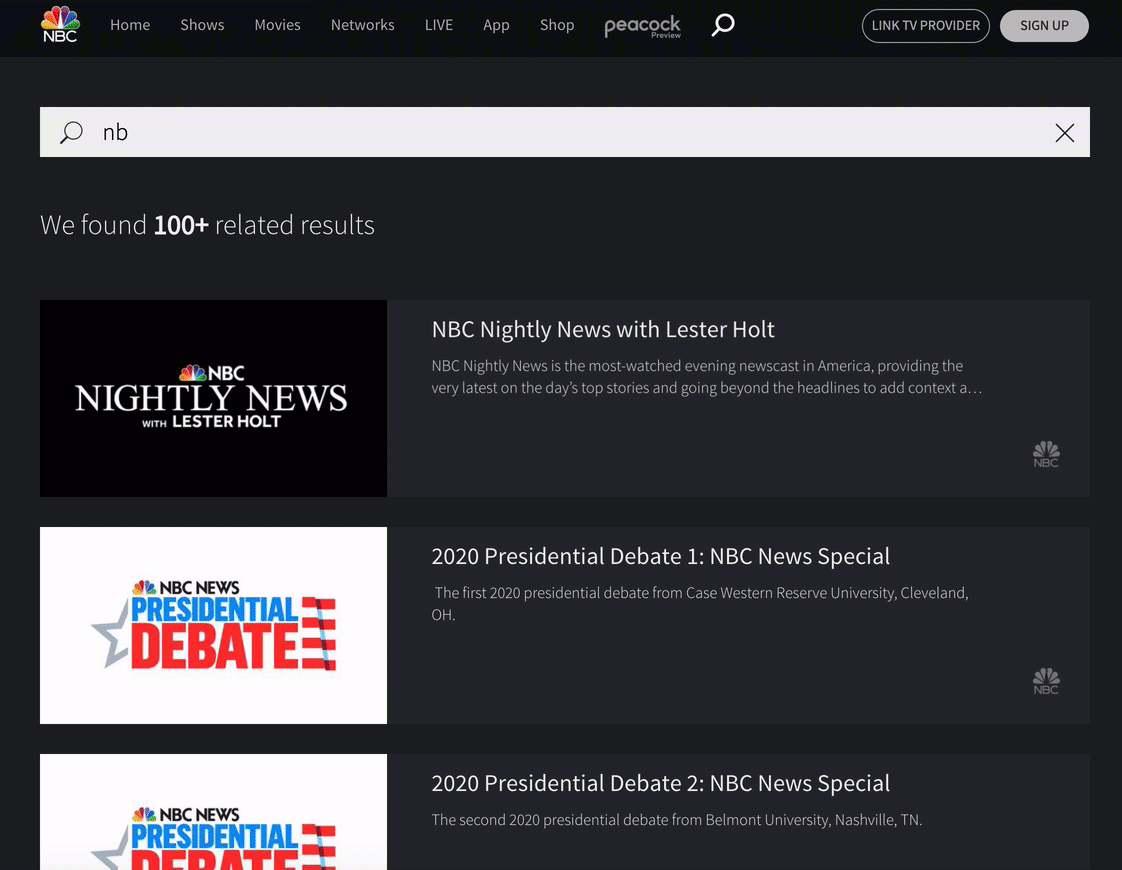
When a television viewer on the website enters a specific TV-related query in the search box, for instance, something about soccer, a banner ad promotes related content (e.g., a program they may wish to watch Sports).
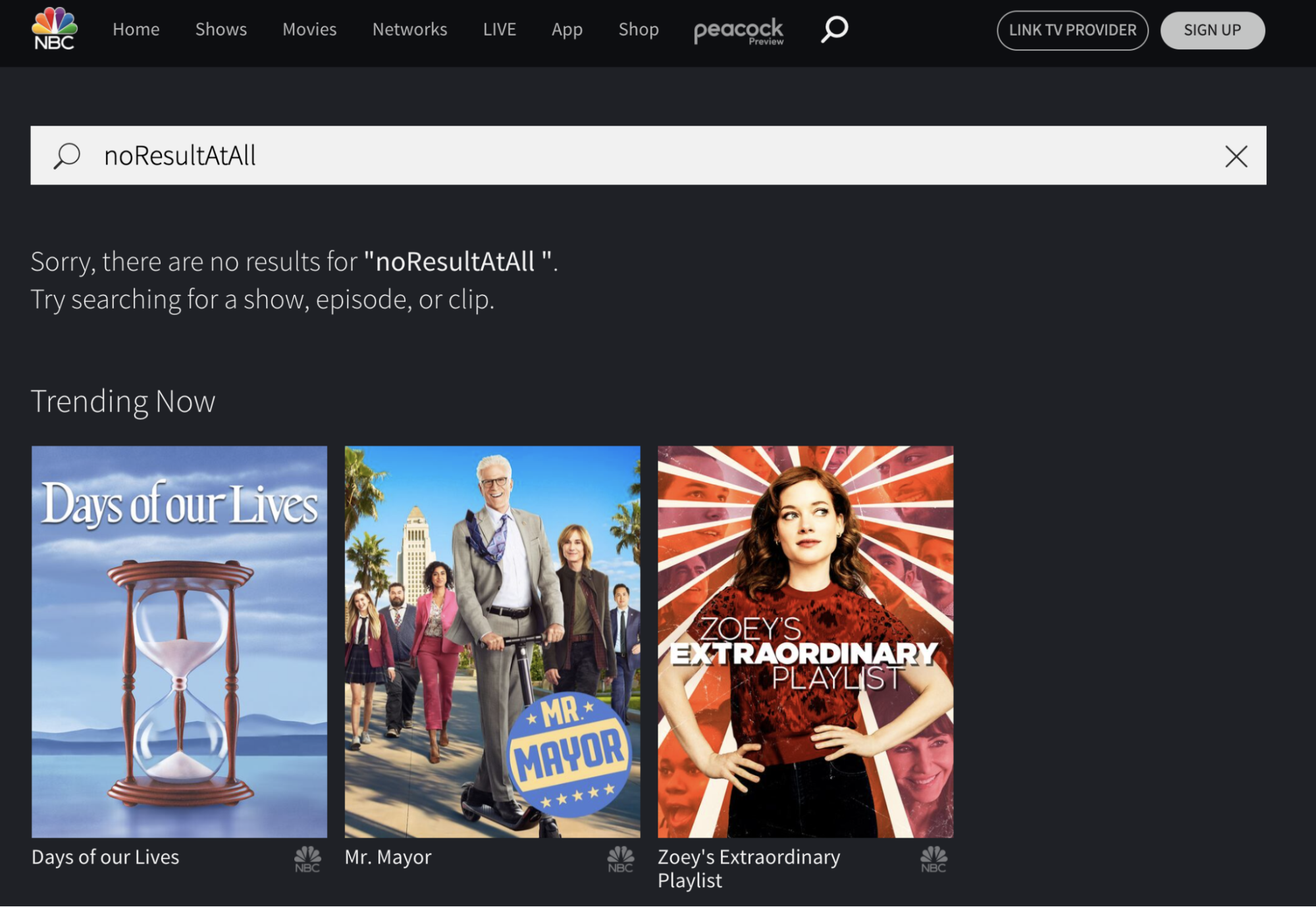
Media companies aiming to enrich site visitors’ search experience can avoid ‘dead-end searches’ by surfacing curated, promotional content below the “No results” message.
When a person conducts a search on the broadcaster’s site that ends up with no results, they are encouraged to try a new search for a show, episode, or clip based on promoted content as well as what’s currently trending.
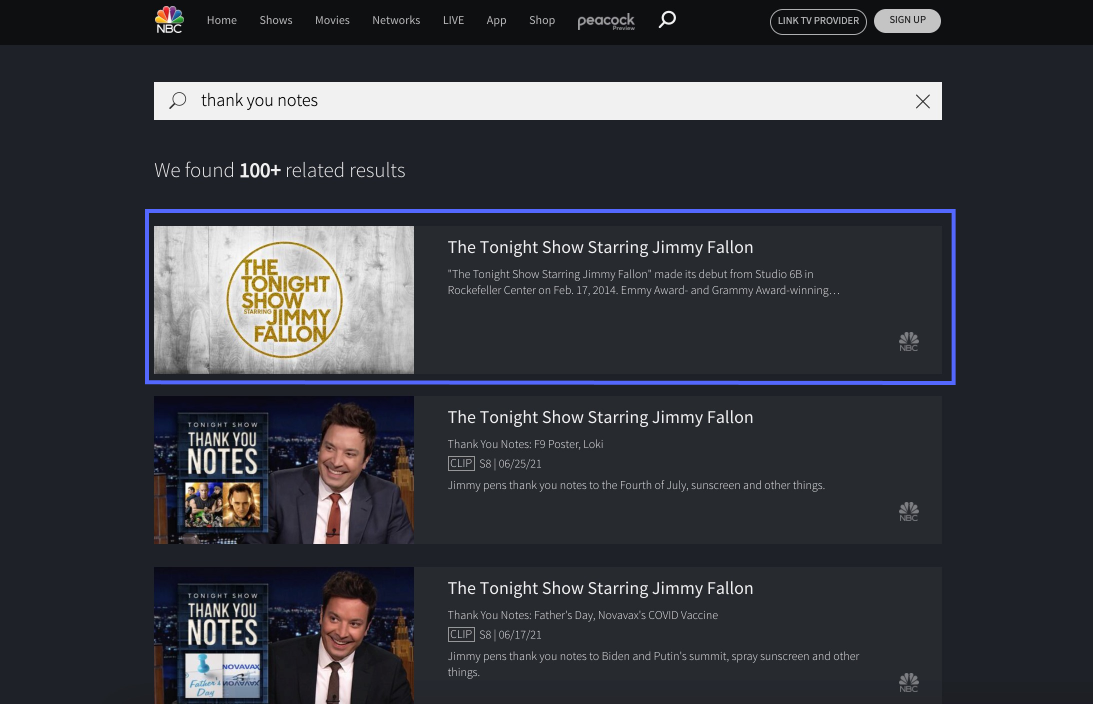
Content curation is an important element of applying business logic to the search results displayed to media site users. When a user enters a specific query in the website’s search bar, relevance rules can be applied to promote selected items. In the above example, when a user enters a query “Thank you notes” on the search bar, a specific content item is pinned to the top of search results.
https://www.algolia.com/doc/guides/managing-results/rules/rules-overview/how-to/customize-search-results-by-platform/
To optimize relevance of the results displayed for each media site user query, the type of content displayed can be tailored to each user’s profile. Website visitors searching for media content will be shown a personalized search results list of items based on their preferences and previous browsing behavior.
Learn more about applying a personalization strategy
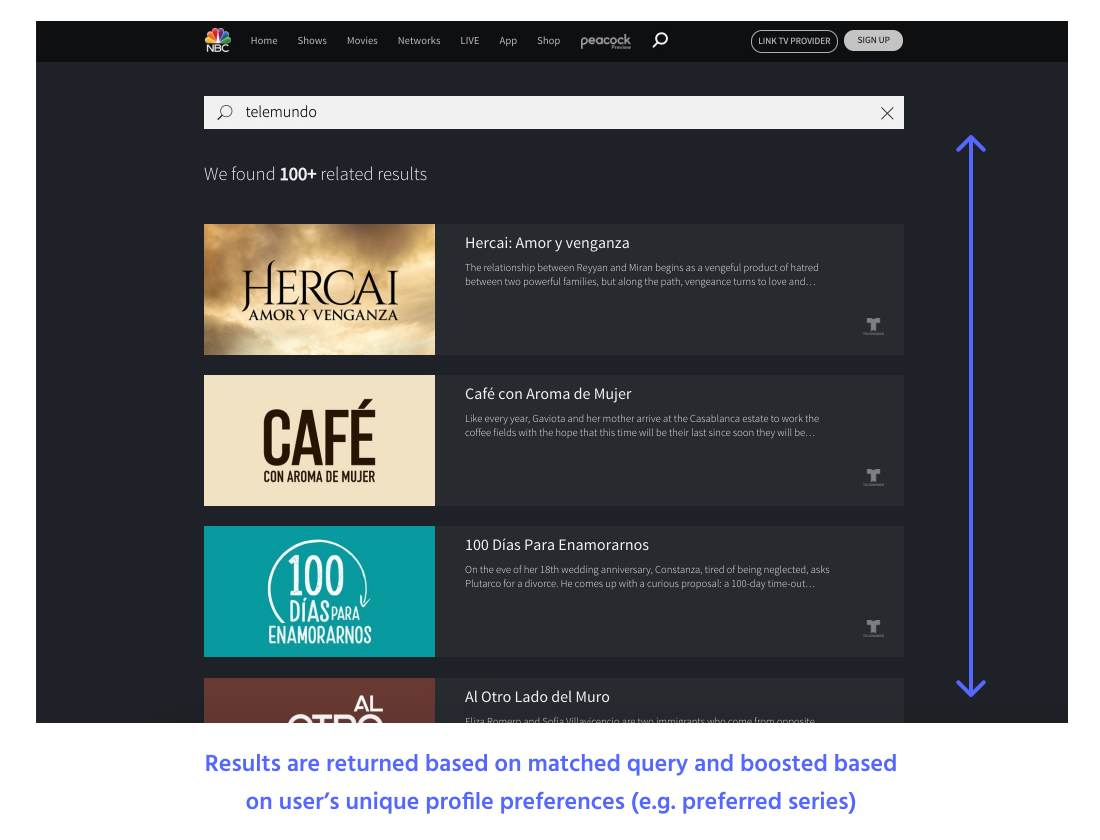
In this example, by personalizing search results for every user based on specific events’ importance (e.g., click on search results or start video) in creating user profiles, this major broadcaster ensures that each user sees the product list most relevant to their unique preferences.
Adding AI optimizations to the media website toolbox is a highly beneficial step for content curation. This also introduces business logic into the search results. AI Re-Ranking frees up editorial managers from repetitive curation activities while maintaining full control on the results. They can rely on AI to dynamically boost the most popular contents, from your entire catalog or just specific categories (e.g. latest releases).
Learn more about leveraging AI Re-Ranking to optimise user conversion
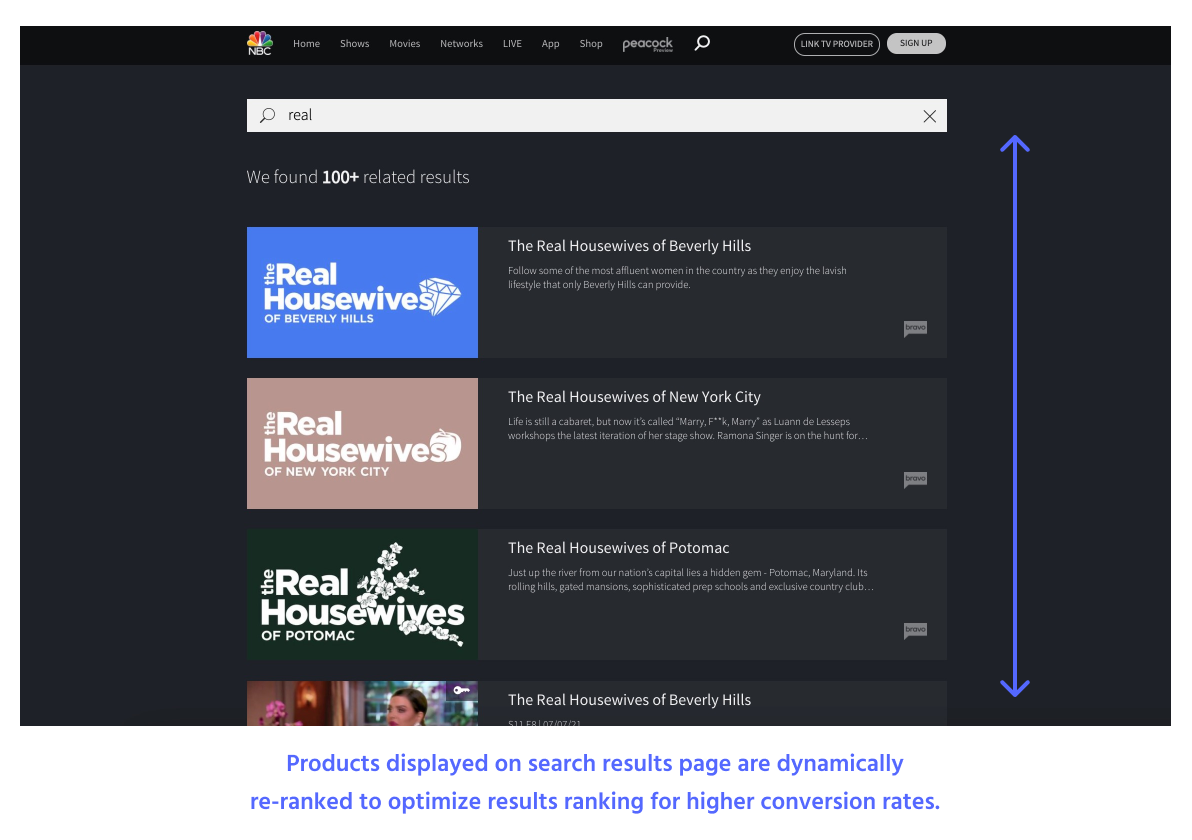
On the broadcaster’s website, TV shows and video content displayed on search-results pages are dynamically re-ranked by Algolia’s AI to increase conversion rates on every platform: web, ios, android, XBoxOne, and more.
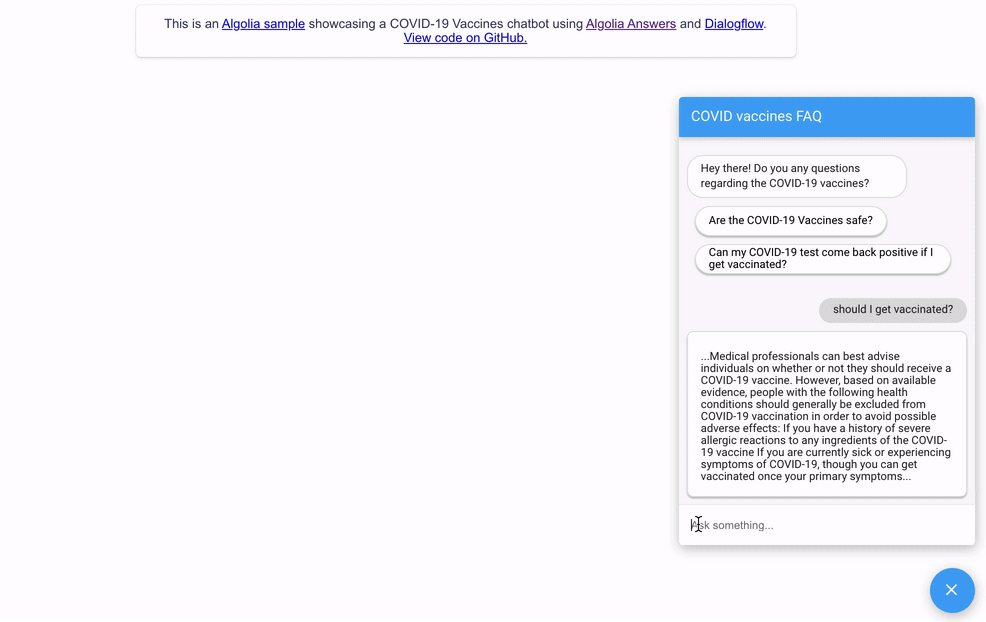
This conversational search app implements a chatbot that answers users’ questions. It uses Google Cloud Dialogflow Messenger to implement the chatbot and leverages the natural language processing features of Algolia Answers to return the best-matching answer from within the website’s content.
API-First means three things: flexibility, speed, and backward compatibility. By flexibility, we mean to express how and why we designed our API to handle a broad range of use cases, which is the opposite of what a product or platform vendor does.
An efficient self-served support center is highly valuable for subscription-based services. On the one hand, the customer sees a tremendous amount of benefit from being able to easily find answers to all support-related questions, without having to scrupulously browse various pages on the website, which inevitably leads to search fatigue and frustration. On the other hand, the organization itself benefits from eliminating or drastically reducing the support cost per customer. The operating costs savings, combined with a superior customer service experience, are a win-win situation for the organization and the customer.
There are multiple complementary ways to provide superior customer service solutions on a media website. Those include: incorporating support-related queries in a multi-index search, redirecting customers to a dedicated support page, adding support-related banners that get surfaced when users enter a support-related query, and featuring a chatbot answering users’ questions on support-related topics.
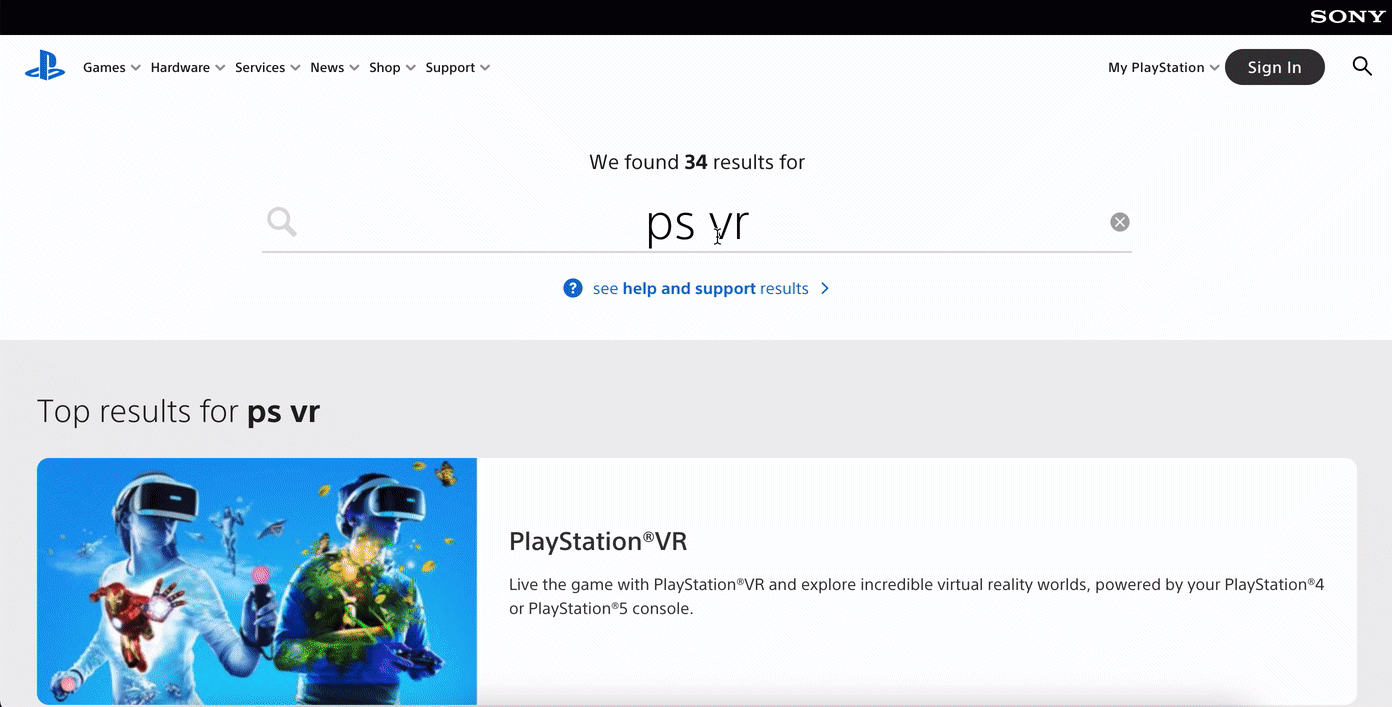
When users on Sony’ PlayStation website enter a query in the search bar, a single search results page shows results from many different sources, like content pages, games, and customer support. Giving users a single access point for information eliminates the time and effort required to browse the website extensively.
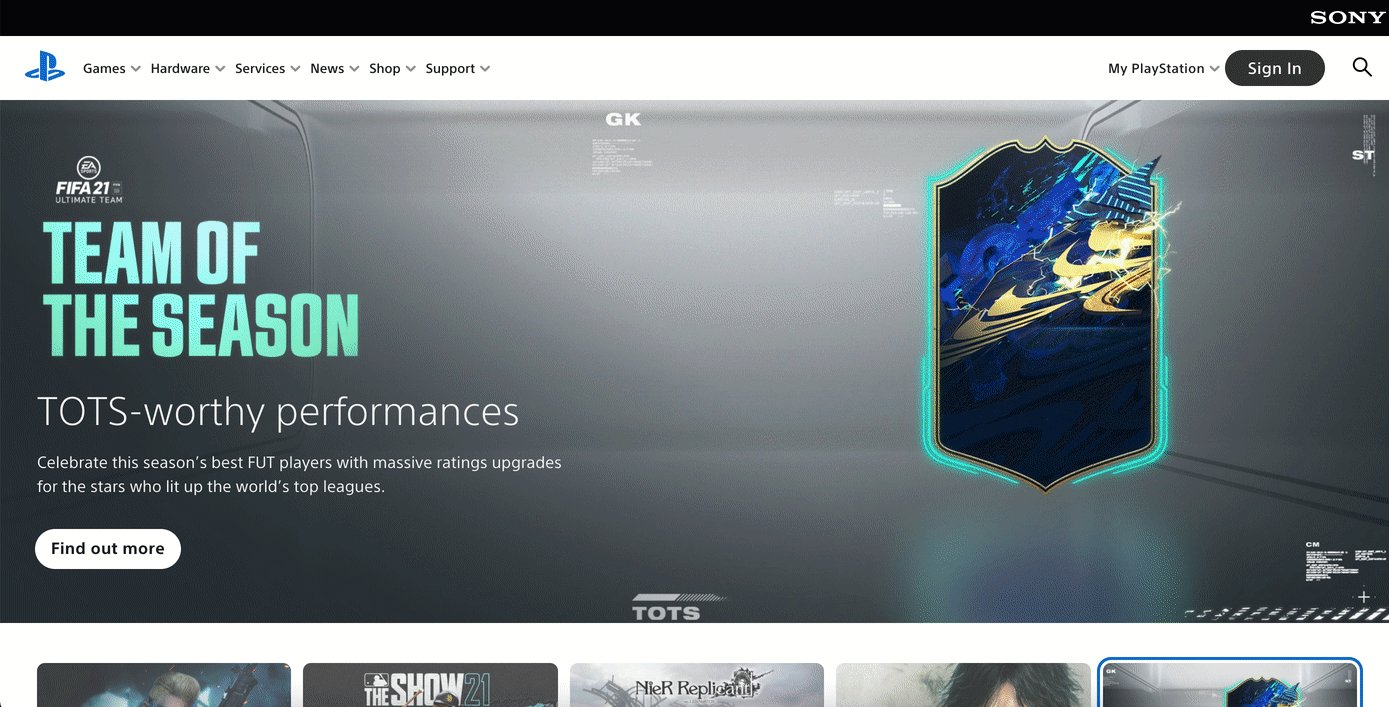
When customers on Sony’s PlayStation website search for topics related to customer service and support, they are directed to a dedicated support page, thus eliminating the need to browse the website separately.
https://www.algolia.com/doc/ui-libraries/autocomplete/guides/adding-suggested-searches/
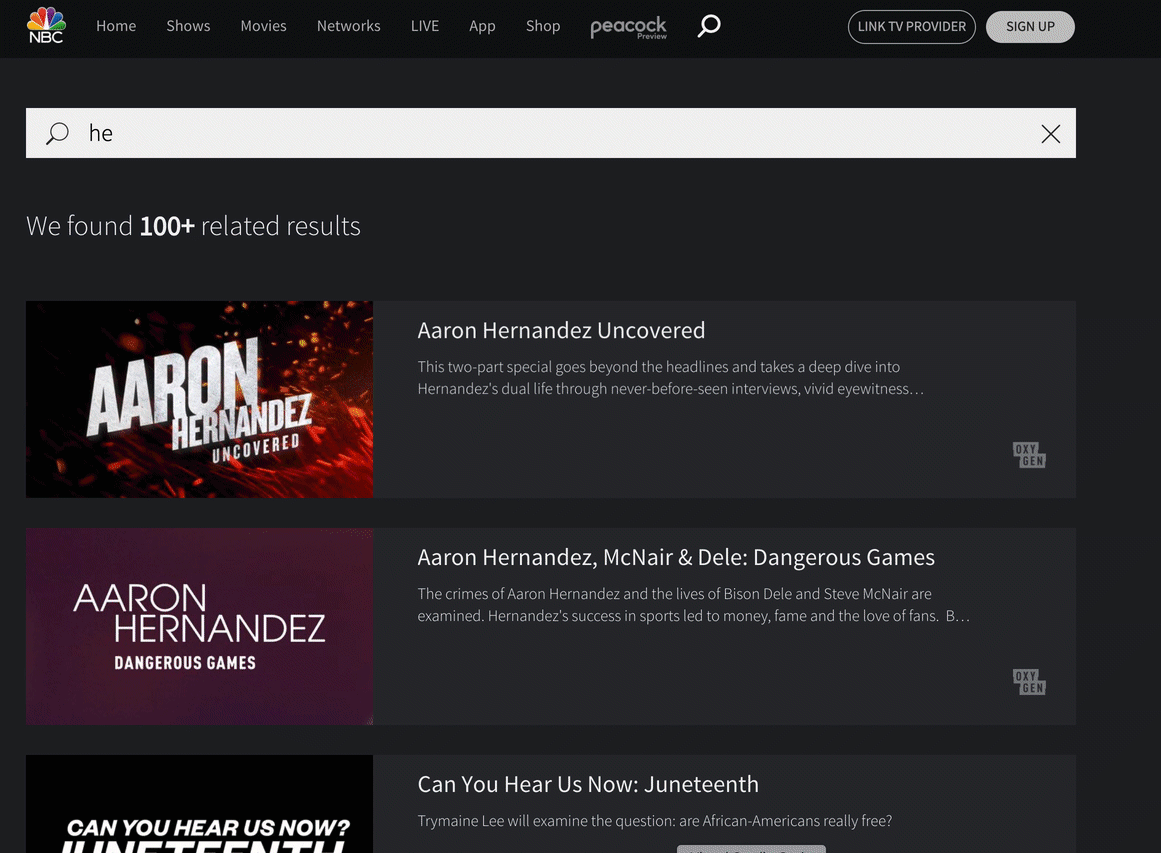
Show available resources in banners when users specifically search for topics about customer support
https://www.algolia.com/doc/guides/managing-results/rules/merchandising-and-promoting/how-to/add-banners/
When designing a website for the media industry, there are several critical elements that need to be addressed in order to achieve a rich and enjoyable customer experience: content discoverability, results relevance and recommendations, and speed of results-surfacing.
The steps to optimize user experience in the media website are:
These three factors differentiate average to great media websites and impact user engagement the most.
Product Manager
Powered by Algolia Recommend